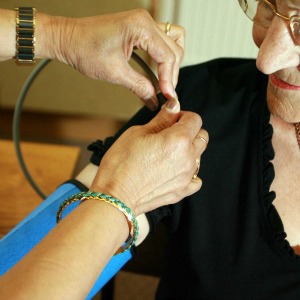Two years ago everyone seemed to be caught by surprise when NHS Employers abruptly cut off negotiations with the GPC and a new contract was imposed in England.
A large part of this was widespread changes to the QOF, with the introduction of a number of new indicators, a shortening of the timeframe for QOF searches from 15 to 12 months and an increase in the upper threshold for achievement for 20 indicators.
In addition, the entire organisational domain was removed and 100 points were taken out to form three new enhanced services, while the value of a QOF point and definition of the average practice size changed.
This was all highly controversial and, for the first time, the devolved health departments in Scotland, Wales and Northern Ireland did not implement the same contract.
We now have the results and they are not good news for practices in England. The overall achievement of points has fallen from 96.7% to 92.4%. This would represent a loss of nearly 39 points worth over £6,000 to an average practice with 6,911 patients – although actual losses are likely to vary widely between practices.
By contrast practices in Northern Ireland, where the timescales were left at 15 months and threshold changes were more minor, maintained overall achievement of over 98%. Scotland did reduce to a 12 month timescale, but still managed an achievement of 97.6%.
Although there has been a decline in achievement almost across the board in England, some clinical areas stick out as having a particularly substantial drop. Diabetes, for instance, has seen a drop from 96% to 90%. As diabetes carries 107 points (up from 88 the previous year) a drop here is very significant to the total. Diabetes was also hardest hit by the threshold increases with seven indicators having their levels increased.
For example the indicator for getting blood pressure lower than 150/90 mmHg in patients with diabetes had an upper threshold of 70% in 2012/13 and national English achievement was 90.4%. For 2013/14 the upper threshold was changed to 93% although this had very little on achievement which rose to only 91.7%. An average practice no longer gained the full points. Despite a small increase in actual achievement the proportion of points gained, and with it the overall payment, has fallen.
Related stories
The same is true in other indicators. The threshold for HbA1c being under 64 mmol/L changed from 70% to 83%. Achievement only moved from 75% to 77% meaning that practices were typically some way away from full points.
However, new indicators in diabetes around dietary review and erectile dysfunction scored fairly well despite being generally unpopular.
Smoking indicators were also affected. There were 25 points for giving smoking advice to patients with chronic disease but once again the threshold was increased from 90% to 96%. This is a very high threshold and only generated a small increase in achievement levels from 93.3% to 94.6%. This may not seem much below the top threshold but, as points are only awarded in a relatively narrow range, this would represent nearly a full point on average.
Hypertension also had a significant drop in achievement of 7.4% which was on top of a three percent drop in the previous year. This is another area with plenty of points (77 of them) which gives it a big effect on overall practice achievement
Although there was a threshold increase here in one indicator the major factor was the transfer of the majority of points to a new, tighter the blood pressure target of 140/90 mmHg with only ten points remaining for 150/90 mmHg (this has now been reversed for 2014/15). On average practices lost over six points on this new, tighter, blood pressure target despite achieving it in 75% of patients.
Again practices did well on the new, but unpopular, GPPAQ based indicators.
Overall this year’s results show that there are improved outcomes for patients covered under the QOF in 2013/14. Actual levels of achievement seem to be generally stable despite several new and rather unfamiliar indicators and the three months less that practices have to achieve the indicators. Practices should be proud of their adaptability and resilience in the face of these changes.
However the income has gone down. This is a very clear case of practices doing more and receiving less and this seems to be mostly down to higher thresholds for indicators and tougher blood pressure levels to achieve.
Many of these increased thresholds are still here in this year’s QOF and we already know that the value of a QOF point has dropped this year. Once again practices will have to run faster if they want to stay in the same place.
Dr Gavin Jamie is a GP in Swindon and runs the QOF Database website
Pulse October survey
Take our July 2025 survey to potentially win £1.000 worth of tokens














